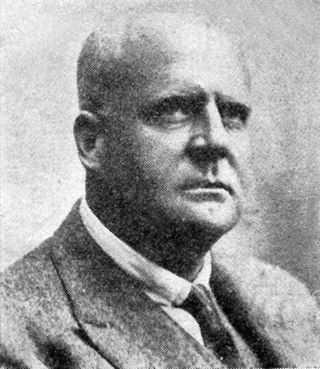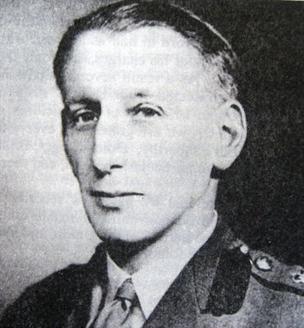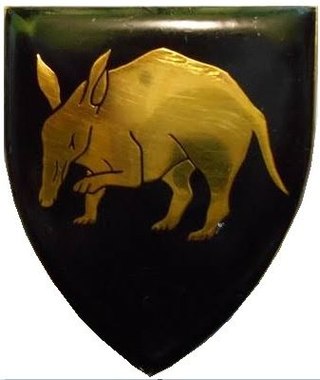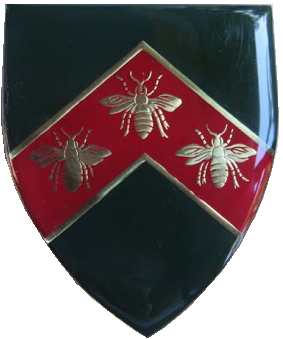
Gauteng is one of the nine provinces of South Africa. The name in Sotho-Tswana languages means 'place of gold'.

The South African Army is the principal land warfare force of South Africa, a part of the South African National Defence Force (SANDF), along with the South African Air Force, South African Navy and South African Military Health Service. The Army is commanded by the Chief of the Army, who is subordinate to the Chief of the SANDF.

The South African Special Forces Brigade, colloquially known as the Recces, is South Africa's principal special operations unit, specialising in various types of operations, including counter-insurgency, long-range-reconnaissance, unconventional-warfare, special operations, hostage-rescue, and direct-action operations. The brigade operates with two active-duty groups, with 4 Special Forces Regiment focusing on maritime operations, and 5 Special Forces Regiment focusing on land and airborne operations. Only about 8% of recruits who undergo South African special forces training pass the course.


Deneys Reitz (1882—1944), son of Francis William Reitz, was a Boer warrior who fought in the Second Boer War for the South African Republic against the British Empire. After a period of exile in French Madagascar he returned to South Africa, where he became a lawyer and founded a major South African law firm. In the First World War he fought for the Union of South Africa against the German Empire, and then was an officer in the British Army, commanding several battalions. In later life he was a politician. Deneys Reitz was educated at Grey College, Bloemfontein.

Sir Basil Ferdinand Jamieson Schonland OMG CBE FRS was noted for his research on lightning, his involvement in the development of radar during World War II and for being the first president of the South African Council for Scientific and Industrial Research.

The Rand Rebellion was an armed uprising of white miners in the Witwatersrand region of South Africa, in March 1922. Jimmy Green, a prominent politician in the Labour Party, was one of the leaders of the strike.

Natal Command was a Command of the South African Army. It was headquartered in Durban, South Africa. By the 1980s, it was responsible for the security of the region, forming the primary level of command for military operations in support of the Police. It also provided logistic, administrative and service support to units and formations operating in its area of responsibility.

Orange Free State Command was a command of the South African Army, active from c. 1933 to c. 1999. Its headquarters was at Bloemfontein, seemingly for a period at the Tempe airfield, later to become the Tempe Military Base.

Western Province Command was a command of the South African Army.

Northern Transvaal Command was a command of the South African Army. It was active from 1959 to mid 2000 when it was disestablished. Formerly it was named Northern Command from 1946 to 1959.
Major General Bertram Frank Armstrong was a South African General officer. He was the commanding officer of the 5th South African Brigade in the Western Desert Campaign in North Africa during World War II.

Bloemhof Commando was a light infantry regiment of the South African Army. It formed part of the South African Army Infantry Formation as well as the South African Territorial Reserve.

Sandton Commando was a light infantry regiment of the South African Army. It formed part of the South African Army Infantry Formation as well as the South African Territorial Reserve.

Vanderbijlpark Regiment was a light infantry regiment of the South African Army. It formed part of the South African Army Infantry Formation as well as the South African Territorial Reserve.

2 Locating Regiment was an artillery regiment of the South African Artillery. The regiment provided divisional troops but was typically organized to allocate locating batteries to brigades.

15 Reception Depot was an administrative unit of the Personnel Service Corps of the South African Army.

Brakpan Commando was a light infantry regiment of the South African Army. It formed part of the South African Army Infantry Formation as well as the South African Territorial Reserve.
The Great Synagogue on Wolmarans Street, Johannesburg, is known as the city's mother synagogue and "the crown jewel of Orthodox Judaism in South Africa." All large-scale Jewish events in Johannesburg were held in the building, and throughout its existence it was the seat of the country's chief rabbi. Northward migration by congregation members led to the synagogue relocating in 1994, to be replaced by the Great Park Synagogue on Glenhove Road, Oaklands, built on the model of the Great Synagogue, whose own architecture in turn was inspired by the Hagia Sophia.

Wemmerpan Commando was a light infantry regiment of the South African Army. It formed part of the South African Army Infantry Formation as well as the South African Territorial Reserve.




















